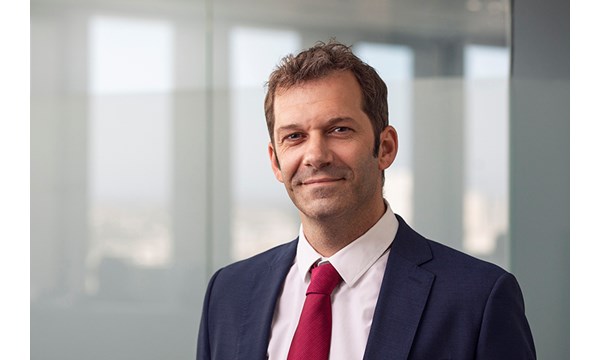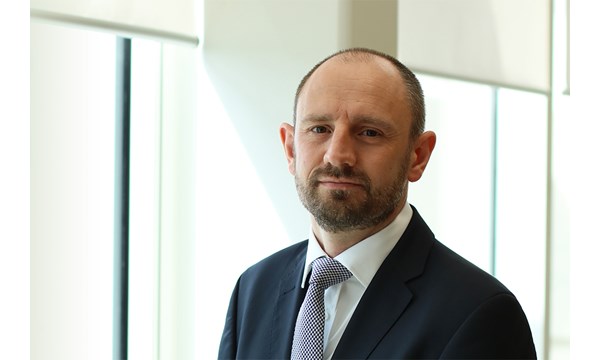Sign up today to get the best of our expert insight in your inbox.
COP28 key takeaways
The challenges in accelerating the energy transition
6 minute read
Simon Flowers
Chairman, Chief Analyst and author of The Edge

Simon Flowers
Chairman, Chief Analyst and author of The Edge
Simon is our Chief Analyst; he provides thought leadership on the trends and innovations shaping the energy industry.
Latest articles by Simon
-
The Edge
Upstream’s mounting challenge to deliver future oil supply
-
The Edge
A world first: shipping carbon exports for storage
-
The Edge
WoodMac’s Gas, LNG and the Future of Energy conference: five key themes
-
The Edge
Nigeria’s bold strategy to double oil production
-
The Edge
US tariffs – unpredictability is the strategic planners’ nightmare
-
The Edge
US upstream gas sector poised to gain from higher Henry Hub prices
Prakash Sharma
Vice President, Head of Scenarios and Technologies

Prakash Sharma
Vice President, Head of Scenarios and Technologies
Prakash leads a team of analysts designing research for the energy transition.
View Prakash Sharma's full profileDavid Brown
Director, Energy Transition Practice

David Brown
Director, Energy Transition Practice
David is a key author of our Energy Transition Outlook and Accelerated Energy Transition Scenarios.
Latest articles by David
-
Opinion
Energy priorities of House Republicans come out in full force
-
Opinion
The new landscape for gas-fired power: turbocharged or turbo lag?
-
The Edge
The narrowing trans-Atlantic divide on the energy transition
-
Opinion
Energy transition outlook: Americas
-
Opinion
The federal government steps up support for nuclear power
-
Opinion
The impact of Republican control on US energy policy and the IRA
Elena Belletti
Vice President, Global Head of Carbon Research

Elena Belletti
Vice President, Global Head of Carbon Research
Elena leads our carbon research, working with a growing team to help clients accelerate their energy transition journey.
Latest articles by Elena
-
Opinion
Carbon management frequently asked questions part 2: offsets
-
The Edge
COP28 key takeaways
-
Opinion
What could COP28 mean for Article 6?
-
The Edge
COP28 preview: five things to look for
-
Opinion
Debut of the first EU carbon border tax
-
Opinion
How are oil and gas companies using carbon offsets to decarbonise?
Ed Crooks
Vice Chair Americas and host of Energy Gang podcast

Ed Crooks
Vice Chair Americas and host of Energy Gang podcast
Ed examines the forces shaping the energy industry globally.
Latest articles by Ed
-
Opinion
What the "big beautiful bill" means for US energy
-
Opinion
Inside the ‘crazy grid’
-
Opinion
The Big Beautiful Bill is close to passing
-
Opinion
Ceasefire in the Israel-Iran conflict
-
Opinion
The impact of the Israel-Iran conflict escalation on the global energy market
-
Opinion
EBOS: the unsung hero that’s accelerating clean energy deployment
Chris Seiple
Vice Chairman, Energy Transition and Power & Renewables

Chris Seiple
Vice Chairman, Energy Transition and Power & Renewables
Chris brings more than 30 years of global power industry experience to his role.
Latest articles by Chris
-
Opinion
eBook | Navigate power market uncertainty with confidence: the essential guide to profitable energy investments
-
Opinion
eBook | Power surge: can US electricity supply meet rapidly rising demand?
-
Opinion
eBook | Historic opportunities and complex challenges in a volatile world
-
Opinion
The 2025 US power market outlook
-
The Edge
How gas could displace renewables in meeting surging US data centre demand
-
Opinion
Uncertainty dominates the 2025 US power outlook
Robin Griffin
Vice President, Metals and Mining Research

Robin Griffin
Vice President, Metals and Mining Research
An integral part of the research team since 2007, Robin leads our analysis across metals and mining markets.
Latest articles by Robin
-
Opinion
Metals and mining tariff scenarios: potential impacts of new US tariffs on metals markets
-
Opinion
Where next for metals markets in 2025?
-
Opinion
eBook | Understanding the metals and mining landscape in 2025
-
Featured
Metals & mining 2025 outlook
-
Opinion
Challenges and opportunities for the steel value chain
-
Opinion
The future of coal in the global energy sector
Nick Pickens
Research Director, Global Mining

Nick Pickens
Research Director, Global Mining
Nick has over 20 years of experience in the metals and mining sector across base, bulk and precious metals.
View Nick Pickens's full profileLuke Lewandowski
Vice President, Global Renewables Research

Luke Lewandowski
Vice President, Global Renewables Research
Luke heads our Global Renewables Research team, which includes wind, solar and energy storage.
Latest articles by Luke
-
Opinion
eBook | Navigate power market uncertainty with confidence: the essential guide to profitable energy investments
-
Opinion
New frontiers: order intake by Chinese wind turbine OEMs advanced beyond domestic dominance in H1 2024
-
Opinion
Distributed solar and storage: a beacon of security and hope
-
The Edge
COP28 key takeaways
-
Opinion
The power of the sun: supporting energy security in Puerto Rico
-
Opinion
Inflation Reduction Act propels the global wind outlook
There’s more than one measure of success. Our team was there and witnessed an organisational triumph. The sheer scale of COP28 signalled an event of global interest – over 100,000 attended, bigger than this year’s Burning Man music festival, compared with about 10,000 at Kyoto in 1997. And it was inclusive – virtually every country and interest group on the planet was represented.
COPs are about achieving consensus, so disagreements are always part of the game. Where COP28 has proved exceptional is in reaching a consensus at all with wars raging in Ukraine and Gaza, and blocs and countries with such diverse agendas as the Middle Eastern nations, China, the US, the EU, the UK, South Korea, Japan and many others. Everyone stayed in the room to work things through. It hasn’t solved all the problems, no COP does; COP29 in Azerbaijan can continue the progress made over the last 20 years.
The big news from the conference was that the concluding statement called for “transitioning away from fossil fuels in energy systems, in a just, orderly and equitable manner, accelerating action in this critical decade, so as to achieve net zero by 2050”. Some countries said the statement did not go far enough. But it is still a significant moment: the first time the governments of the world have agreed on a goal to reduce consumption of oil, gas and coal.
The global stocktake that concluded at Dubai was a reality check. No major country is on track to achieve emissions reductions to meet the Paris goal of limiting global warning to well below 2 °C. With the window closing fast, the focus in international negotiations is increasingly shifting to emphasise adaptation to climate change. But the “UAE consensus” is a signal that the pressure to shift the global energy system away from fossil fuels will continue.
Here are our team’s initial thoughts.
Pressure mounting on fossil fuels
The wording of the statement was tightened in the final round of negotiations to include an agreement to transition away from all fossil fuels – oil, gas, and coal. The COP28 presidency came under intense pressure from some developed countries and from vulnerable nations to strengthen the language on fossil fuels, in the face of opposition from leading oil and gas producers. The direction of travel is clear, with the calling out of oil and gas for the first time a step towards phasing out unabated fossil fuels. This debate will be a hot topic again at COP29.
The commitment to triple renewables capacity, and statements in support of hydrogen, nuclear power, carbon capture and storage (CCS), and demand-side technologies (including road transport) also reflect the momentum building towards a low-carbon energy system.
Implications: A phase-out of unabated fossil fuels by 2050 may be achievable. But it will require building low-carbon supply at twice the rate of energy demand growth and a rapid acceleration of CCS. Though governments recognise the urgency, slow progress in recent years reflects the difficulty of attracting investment. A potential shift in the US back to a Republican administration in the 2024 election could swing the balance of priorities from low-carbon supply towards fossil fuels.
The final text specifically calls out the role of “transitional fuels” in facilitating the transition to lower-carbon technologies while ensuring energy security. Good news for natural gas, which can play a role in balancing intermittent renewables while the next generation of dispatchable technologies such as hydrogen power and new nuclear capacity ramps up in the 2030s.
Solar and wind capacity already increased four-fold since 2015; tripling from today’s level by 2030 is achievable (and broadly in line with WoodMac’s net zero scenario) but extremely challenging. It also must be supported by rapid expansion of grid infrastructure. Long lead times present a major challenge to the necessary build-out of hydro, geothermal and bioenergy by 2030.
The scale of renewables build-out will put enormous pressure on the supply of metals and critical minerals. The supply gap by 2030 is wide enough in our base case forecast and is likely to be unbridgeable at the much faster rates of demand growth in a scenario aimed at net zero by 2050.
Finance
The agreement included US$725 million of financing for the Loss and Damage Fund, launched at COP27 in Egypt. It was an important symbolic success, but a tiny amount relative to the scale of the problem.
The final text acknowledges the gap in climate finance and the growing needs of developing countries. The ‘New Collective Quantified Goal,’ intended to replace the present, insufficient US$100 billion a year from governments, needs to be decided on at COP29, the Finance COP. One of the objectives will be to crowd-in private financing.
Implications: We struggle to see how the finance for mitigation and adaptation efforts, which may cost US$4 trillion to US$5 trillion a year, can be made available quickly at affordable cost. The current increases in renewables development costs due to the higher cost of capital and supply chain bottlenecks are amplifying the challenge.
Global institutions can help. The World Bank and the IMF maintain the special drawing rights (SDRs) that can be allocated to climate mitigation and adaptation projects. The IMF could use the same approach as during the peak of the Covid pandemic, when it released US$650 billion to developing countries.
Implementing a global carbon price is also an option, which would help create a level playing field to shift capital away from fossil fuel projects and accelerate the deployment of low-carbon technologies. Otherwise, these lofty climate goals will unlikely move the needle on emissions reduction.
Nature-based solutions
A headline breakthrough was on nature protection with around US$2.7 billion in finance. Multilateral banks committed to principles for nature-positive finance and pledged US$100 billion by 2027. A “mangrove craze” resulted in several bilateral initiatives. Many countries expanded the scope of their nationally determined contributions –70% now include oceans and blue carbon).
Implications: Is this enough? Earlier in the week, a UN report said that US$7 trillion is spent a year to destroy nature – that’s 30 times the amount spent on nature-based solutions.
Carbon markets
No agreement has been reached on the implementation of Article 6.4 of the Paris Agreement, which is a big disappointment for international carbon markets. Article 6.4 was supposed to provide clarity on whether carbon market exchanges should count towards national emissions reduction goals, and what types of credits should be allowed.
Implications: There is mounting scepticism on whether the Article 6 mechanism will ever bring the requisite guidance and higher standards to the market.
Methane
The Oil and Gas Decarbonisation Charter (OGDC) is a voluntary commitment to net zero oil and gas operations by 2050. It was signed initially by 50 leading companies: 27 NOCs, 17 Independents and six out of seven Majors. Chevron, the only Major without a comprehensive corporate net zero target, opted out. The signatories pledged to eliminate routine flaring and deliver near-zero methane emissions by the end of the decade.
Implications: Positive message, broad scope, modest impact. To have a tangible impact the OGDC needs to significantly expand its membership to cover an even larger share of oil and gas emissions, commit to deeper and more rapid emissions cuts, and expand its scope to become the central, unifying oil and gas decarbonisation initiative.
Thanks to: Prakash Sharma and David Brown (Energy Transition), Elena Belletti (Carbon Research), Ed Crooks (Vice Chair Americas), Chris Seiple (Vice Chair P&R), Steve Knell (Consulting P&R), Robin Griffin and Nick Pickens (Metals), Luke Lewandowski (P&R Research)
Make sure you get The Edge
Every week in The Edge, Simon Flowers curates unique insight into the hottest topics in the energy and natural resources world.














